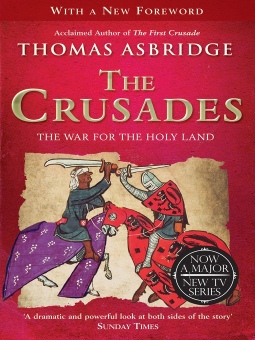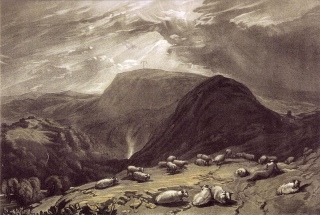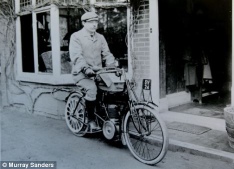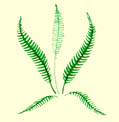The Fernhurst Society
Newsletter no 43, February 2014
Programme for 2014
Thursday 27th February Flora Thompson Life after Oxfordshire |
Talk by John Owen Smith, Village Hall 7.30pm for 8pm
Flora Thompson described 19th century rural Oxfordshire vividly in ‘Lark Rise to Candleford’. She drew on her experiences as a post-mistress to comment equally vividly about life in Grayshott (‘Heatherley’) and Liphook (‘The Peverel Papers’). |
| Thursday 24th April Granny on Ice | Talk by Tess Burrows, Village Hall 7.30pm for 8pm
Tess (climber, explorer, grandmother of two and Haslemere resident) took part in the recreation of the Amundsen/Scott race to the South Pole in 2009. She will talk about her experience and details of Scott’s expedition. |
| Sunday 27th April Bluebell Walk | Meet at Crossfields Car Park at 1.30pm for car-sharing
After the walk there in 2013 to see native daffodils, we are visiting Flexham Park, Petworth, again this year to see the prolific bluebells. |
| Saturday 10th May Special Exhibition | Village Hall 2.00pm – 5.00pm
The Margaret Shaw Collection / The First World War A special exhibition mounted by the Fernhurst Archive to celebrate the acquisition of The Margaret Shaw Collection and commemorate The Great War 1914 – 1918 with local memorabilia and information. See page 2 for more information. |
| Sunday 18th May Fernhurst Revels | Village Green 12 noon - 4pm
The Society will have a stand at the Revels. Any Society members who could spare an hour or two to help us on the stand would be very welcome. Please contact Christine Maynard on 653663 or email enquiries@fernhurstsociety.org.uk |
| Sunday 27th July Celebrating Sussex and the South Downs | Fernhurst to Midhurst walk – morning start times to be advised
Celebrate our lovely countryside with a walk to Midhurst on the opening day of the new South Downs National Park HQ, arriving in time for lunch at Capron House at about 12.30 pm. The walk will cater for all abilities from the really adventurous to Sunday strollers; with a choice of distances and start times along the main route. |
| Sunday 14th September
Kingley Vale |
Walk led by Richard Williamson – Crossfields Car Park 1.30pm Richard Williamson was for 30 years the manager of Kingley Vale National Nature Reserve and has an unparalleled knowledge of South Downs wildlife and lore. |
| Thursday 30th October
‘A Short Biography of the English Channel’ |
Talk by Iain Kennedy, Village Hall 7.30pm for 8pm The English Channel – how and when it was formed, how this narrow stretch of water has come to influence the way we think, speak and behave; and the various attempts to cross the channel including those by Philip of Spain (the Armada), Napoleon Bonaparte (in barges) and you know who in the 1940s. |
| Thursday 27th November
AGM and talk: Petworth |
AGM and talk by Peter Jerrome, Village Hall 7.30pm for 8pm Peter is an expert on the history of Petworth and will give a talk on the history, buildings and people of Petworth. |
News and local history from the Fernhurst Archive
Special Exhibition for 2014
The Fernhurst Archive is already hard at work preparing for a joint exhibition of the Margaret Shaw Collection and, as it is the centenary year, some First World War material. The exhibition is scheduled for Saturday 10 May 2 – 5pm.
The whole team is sifting through the Margaret Shaw collection of 57 hand-crafted magazines produced by Margaret for her Fernhurst Girl Guides. We aim to present as comprehensive a picture as possible of not just the Girl Guide Movement as it was at that time, but a much broader one of what life was like for a young girl growing up in the late 1920s/early 1930s, their day-to-day lives, hopes and aspirations, and some village and national events as well. Margaret Shaw’s numerous photographs and exquisite water colours will provide much visual impact.
The First World War material is also being prepared for Jenny Mouland of the Midhurst and Petworth Observer, and for possible use by the Good Companions, as well as in our own exhibition.
Ron Cole’s press-cuttings collection
As we will have to return the Cole press-cuttings albums to David Cole at some point, Kathy Bird has undertaken the role of photo-copying and indexing this collection, which presents a valuable view of Fernhurst from the 1950s to 1989.
The Fernhurst Building Society
The Fernhurst Building Society was formed in April 1923 and acquired its first plot of land at Upper Cross. The land was owned by the Blackdown Estate and Mr J. G. Cole, who had once worked for the owner Sir Frederick Phillipson-Stow, managed to buy the site for the very reasonable sum of £100. James Cole, a largely self-educated and very forward-thinking man, who began to make a name for himself in Fernhurst, felt very strongly that as many people as possible should be enabled to buy their own home.
Within a month local builder Jack Slade, whose firm had built the Village Hall in 1909, had furnished an estimate to erect three pairs of cottages at £721 per pair. There was a further subsidy from the Government of £75 per cottage. The first pair was sold just 90 years ago in February 1924 for £360.
More properties followed in Van Lane in 1926 and Glebe Road in 1938. The Society also bought three cottages on the Green. They were rented out at 6s 6d, 6s and 8s 6d respectively, easily affordable on the average working wage of the day.
By 1963 the Society had run its course and was wound up and the properties sold off.
Christine Maynard
Fernhurst Society Subscriptions for 2014 are now due
Do you still need to pay?
If you have paid already or are a life member, you can skip this section!
We have introduced secure online payment, so you can now pay by credit card or through PayPal. If you prefer, you can still pay by cheque or standing order. Whichever method of payment you choose you need to complete the membership and subscriptions form and it return to the membership secretary. To download the form and/or pay online go to http://www.fernhurstsociety.org.uk/subscriptions.html
Reviews of Recent Fernhurst Society Events
31st October 2013
The Crusades
The Fernhurst Society was delighted that Dr Thomas Asbridge was able to amuse, interest and inform the members on the subject of The Crusades. Many members admitted that their knowledge of the crusades stopped with Richard the Lionheart.
An excellent speaker, Dr Asbridge lit up the Crusades, explaining away many misconceptions, and putting the wars into the context of the history of the world where the opposing countries still traded with each other and the two religions, Muslim and Christian, had not just conflict but also co-existence.
Dr Asbridge showed slides of Jerusalem where the old walled city is still very much in evidence. He explained that Jerusalem was central to Judaism, Christianity and Islam and the holding of Jerusalem was the focal point of the wars.
Many European countries, including England, France, Germany and Austria, participated in the Crusades, but there was no one leader, making ultimate Christian success less likely.
In the 19th and 20th century the word ‘crusade’ became more involved with colonialism and national identity and General Allenby, as he entered Jerusalem, at the end of the war declared it was 'the end of the crusades'!
In modern times the word 'crusade' has taken on new meanings and is used very liberally for initiatives on schooling to traffic control so it has now lost its devotional context for many.
 |
Dr Asbridge is an internationally renowned authority on the Crusades and has written a number of books on the topic, most recently ‘The Crusades: The War for the Holy Land’ published in 2012 to coincide with his BBC series. |
28th November 2013 The Rise and Fall of Little Switzerland
After the AGM, Dr Marion Dell gave us a very interesting talk on the short period of bohemian cultural life around Hindhead.
Up until the mid 19th century, the area was notorious for highwaymen. It was regarded as wild, barren, remote and dangerous even though it was on the main Portsmouth to London road. William Cobbett mentioned the Devil’s Punch Bowl in his book ‘Rural Rides’.
Dickens in Nicholas Nickleby mentioned the true story of the sailor returning from Portsmouth killed in a pub in Thursley (1786). The perpetrators were hung in chains on Gibbet Hill.
 |
Hindhead with Gibbet Hill in the distance. A mezzotint by J M W Turner produced in 1808 from drawings made in 1807 (Fitzwilliam Museum, Cambridge) |
The development of Hindhead was brought about by the arrival of the railway in Haslemere in 1859. Whilst close to London, land was cheap and began to attract people from the city.
Anne Gilchrist had rented Brookbank Cottage, near Shottermill Bridge in 1852. She was part of the bohemian circle in London and, after her husband died, she headed somewhere cheaper for herself and her four children.
Anne was followed by friends such as William Rossetti, the brother of Dante Gabriel Rossetti the painter. She sublet Brookbank to George Elliot (Mary Anne Evans) who wrote ‘Middlemarch – A Study of Provincial Life’ there.
Alfred, Lord Tennyson was the next to come and decided to build a summer house near Haslemere to get away from the crowds around his house on the Isle of Wight. He moved into Aldworth House on Blackdown in 1869.
At the same time James Baker, farmer and landowner, who owned large tracts of land in Hindhead, Lynchmere and Fernhurst, got into debt and decided to divide the land in Hindhead into building plots. By advertising Hindhead as a rural idyll yet close to London, many eminent people bought land and moved there.
Rollo Russell, son of Lord John Russell who became the first liberal Prime Minister, built a country residence, Thorshill, now the Devil’s Punchbowl Hotel.
John Tyndall, physicist and climate scientist, who was the first to propose the existence of ‘The Green House Effect’ moved to Hindhead after he married in 1883. He had previously carried out research in the Swiss Alps (1856) and declared the air of Hindhead as pure and clean as the Swiss Alps. He built the Hindhead House now known as Tyndalls.
Sir Frederick Pollock, politician and lawyer, a friend of Tyndall and a keen alpine climber, built Hindhead Copse (1884) which is now part of the Royal School.
Lord Aberconway built Hollyhanger, but rented it out and moved to Branksome.
William C. Marshall, who was a well known architect in London and designed the study for Darwin at Downs House, built Tweenway which is now the Hindhead School of Music. Marshall also took part in the first Wimbledon tennis tournament and was in the winning men’s doubles pair. His wife was an ardent suffragette and is known for her journal describing her life in Hindhead.
The real heyday of the bohemian period in Hindhead was from the late 1880s to 1910.
Conan Doyle bought land and commissioned a house opposite Tyndalls called Undershaw. He lived there from 1887 until 1907. During his tenure there he wrote ‘The Hounds of the Baskervilles’.
 |
Conan-Doyle on his beloved motorcycle at Undershaw |
Writer Grant Allen arrived and wrote the notorious book ‘The Woman Who Did’ in 1895. He lived on the rim of the Devil’s Punchbowl at Hilltop. He recommended the area to Conan Doyle.
George Bernard Shaw lived for a short time at BlenCathra before moving to Herefordshire in 1906. This house is now part of St Edmund’s School.
Flora Thompson was Post Mistress at Grayshott between 1898 - 1901. Though most famous for ‘Larkrise to Candleford’, in her book ‘Heatherley’ she made numerous comments on the many writers who lived in the area and visited her Post Office.
By this time, Hindhead was gaining a reputation for its beauty and healthy environment, and this started to attract tourists. One guide book was called ‘The English Switzerland’. Many hotels sprang up along with small businesses. Carriage companies would meet the trains at Haslemere up to 4 times a day and transport tourists to Hindhead. This popularity was the downfall of Hindhead as a centre for eminent writers and scientists. The new neighbours were the new rich and definitely not bohemian. By 1900 many of the early bohemian settlers had died and others began to move away from the crowds and by 1910 most were gone.

